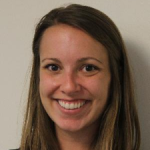The transition from school-age years to adulthood is a stressful period for families of individuals with autism spectrum disorder (ASD). Under the best of circumstances, the shift from school to life after graduation can be difficult. These challenges are amplified when individuals with ASD present with significant support needs (e.g., behavioral problems). Most experts agree that to ensure a successful transition from school to post-school environments, intervention and planning need to begin as early as possible. Transition planning should address barriers that will adversely affect students following graduation (e.g., maladaptive behavior, vocational skills, communication, social skills).
Barriers to Post-Graduation Placements
Individuals with ASD have a range of possible work or living placements once they leave school. For some, a number of factors may interfere with their ability to function in some post-school environments.
- Interactional difficulties: Perhaps one of the most significant obstacles for individuals with ASD involves difficulties with social skills and communication inherent to the diagnosis. For obvious reasons, these interactional deficits may hinder these individuals by requiring more intensive supports (e.g., a setting with higher staff-to-student ratios) or by increasing barriers to achieving employment.
- Behavioral challenges: Many individuals with ASD display problem behavior that is stigmatizing and, in some cases, dangerous. These challenges can be amplified in older individuals with a longer history of engaging in problem behavior. Longstanding maladaptive behavior tends to be more complex, occur with higher intensity, and is often resistant to change. Effective management of problem behavior often requires substantial support and advanced expertise, which represents a significant barrier to placements.
- Intellectual disabilities: As ASD represents a wide spectrum of individuals, the prevalence of intellectual disability varies dramatically. A recent study by the Centers for Disease Control and Prevention that examined records back to 2008 indicated that 38 percent of children with ASD had concurrent intellectual disability. The presence of intellectual disability can significantly limit the scope of available post-graduation placements.
Strategies for Overcoming these Barriers
- Plan ahead: Parents and professionals should have a discussion before high school about the post-graduation plan. Will the student live with their parents after graduation? Go to college? Move to a group home? Attend an adult day program? Have a job in the community?
- All of the goals in a student’s individualized education program (IEP) should represent incremental steps to prepare them for whatever the post-graduation goal is.
- It is possible that the ultimate post-graduation goal may change over time. If the goal changes, the IEP goals should be adjusted accordingly.
- Take advantage of school supports: Supports are generally more readily available during the school-age years as compared to the years following graduation. These supports should be utilized to their fullest extent to address any barriers likely to interfere with post-graduation placements. During this critical period, parents and practitioners should focus on the social and communication deficits inherent in ASD, the assessment and treatment of any interfering forms of maladaptive behavior, and the development of independent life skills.
- Identify appropriate post-graduation placements: After graduation, many people with ASD are ready to go to college, start working at a job in the community, and/or live on their own. For individuals who have more significant support needs, post-graduation placements, such as adult day programs, are often necessary. There are a wide variety of placements available with varying levels of support. While not an exhaustive list of critical components for adult day programs, these represent common factors that should be considered when choosing a placement:
- Well-trained staff available with expertise in the assessment and treatment of challenging behavior
- Adequate opportunities for community integration
- Functional programming that will be meaningful and foster independence (e.g., life skills)
- Programming to teach important leisure skills.
- Appropriate vocational programming/employment opportunities
The goal of an appropriate education should be to prepare students for whatever environment they will be in after graduation and to address any barriers to achieving this goal. This process requires foresight, proper planning, and a collaborative relationship among parents, school personnel and, whenever possible, the student. By using a systematic approach to transition planning and starting early, adolescents and adults with ASD are likely to have the most positive post-graduation outcomes.
 Robert H. LaRue, Ph.D., BCBA-D, is the director of behavioral and research services at the Douglass Developmental Disabilities Center and a clinical associate professor at Rutgers, the State University of University New Jersey. Dr. LaRue has more than 20 years of experience working with people on the autism spectrum. He has co-authored published articles in peer-reviewed journals and presented at national and international conferences. He is an OAR-funded researcher. His interests include the assessment and treatment of maladaptive behavior, staff and teacher training, and behavioral pharmacology.
Robert H. LaRue, Ph.D., BCBA-D, is the director of behavioral and research services at the Douglass Developmental Disabilities Center and a clinical associate professor at Rutgers, the State University of University New Jersey. Dr. LaRue has more than 20 years of experience working with people on the autism spectrum. He has co-authored published articles in peer-reviewed journals and presented at national and international conferences. He is an OAR-funded researcher. His interests include the assessment and treatment of maladaptive behavior, staff and teacher training, and behavioral pharmacology.
 Jacqueline Smith is a second-year doctoral student at the Graduate School of Applied and Professional Psychology at Rutgers University. She is currently a graduate assistant providing behavioral consultation with adults and adolescents at The Douglass Developmental Disabilities Center. Her interests include autism spectrum disorders, the assessment and treatment of maladaptive behavior, and family systems in at-risk populations.
Jacqueline Smith is a second-year doctoral student at the Graduate School of Applied and Professional Psychology at Rutgers University. She is currently a graduate assistant providing behavioral consultation with adults and adolescents at The Douglass Developmental Disabilities Center. Her interests include autism spectrum disorders, the assessment and treatment of maladaptive behavior, and family systems in at-risk populations.
 Robert H. LaRue, Ph.D., BCBA-D, is the director of behavioral and research services at the Douglass Developmental Disabilities Center and a clinical associate professor at Rutgers, the State University of University New Jersey. Dr. LaRue has more than 20 years of experience working with people on the autism spectrum. He has co-authored published articles in peer-reviewed journals and presented at national and international conferences. He is an OAR-funded researcher. His interests include the assessment and treatment of maladaptive behavior, staff and teacher training, and behavioral pharmacology.
Robert H. LaRue, Ph.D., BCBA-D, is the director of behavioral and research services at the Douglass Developmental Disabilities Center and a clinical associate professor at Rutgers, the State University of University New Jersey. Dr. LaRue has more than 20 years of experience working with people on the autism spectrum. He has co-authored published articles in peer-reviewed journals and presented at national and international conferences. He is an OAR-funded researcher. His interests include the assessment and treatment of maladaptive behavior, staff and teacher training, and behavioral pharmacology. Jacqueline Smith is a second-year doctoral student at the Graduate School of Applied and Professional Psychology at Rutgers University. She is currently a graduate assistant providing behavioral consultation with adults and adolescents at The Douglass Developmental Disabilities Center. Her interests include autism spectrum disorders, the assessment and treatment of maladaptive behavior, and family systems in at-risk populations.
Jacqueline Smith is a second-year doctoral student at the Graduate School of Applied and Professional Psychology at Rutgers University. She is currently a graduate assistant providing behavioral consultation with adults and adolescents at The Douglass Developmental Disabilities Center. Her interests include autism spectrum disorders, the assessment and treatment of maladaptive behavior, and family systems in at-risk populations.